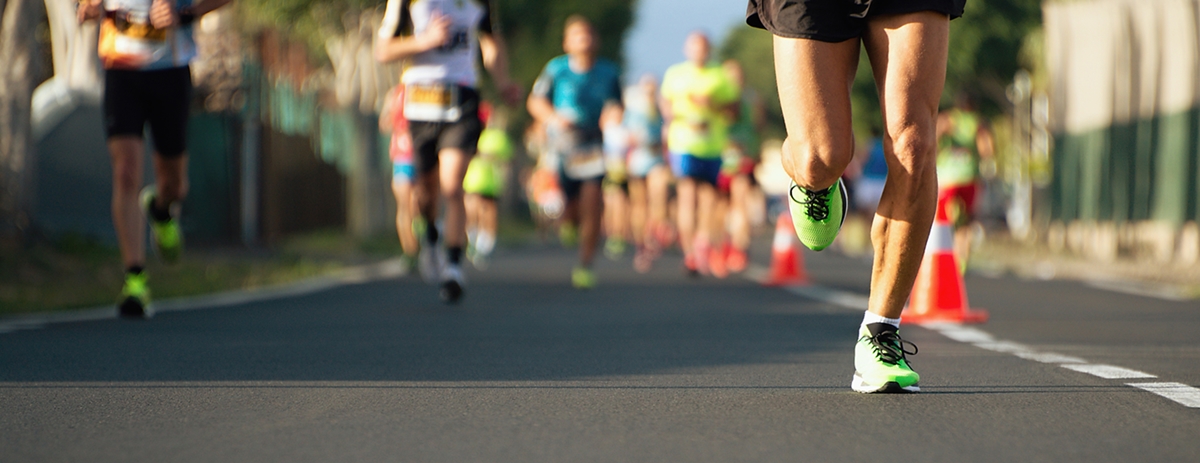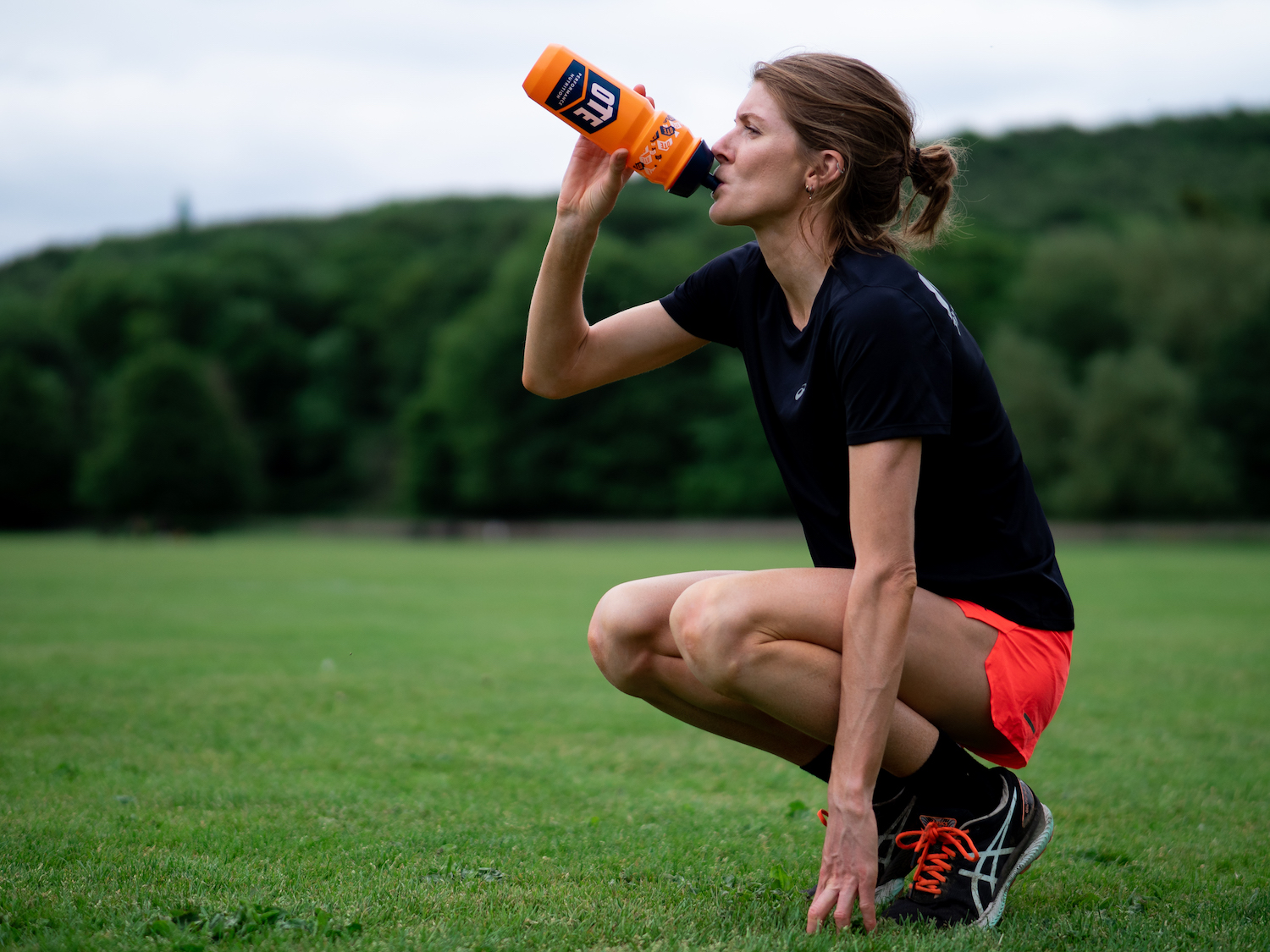

Featured
How To Recover After 10K Run
Modified: August 21, 2023
Discover effective strategies and tips to recover after completing a 10K run. Featured insights on optimizing rest, nutrition, and training for a successful post-race recovery.
Introduction
Welcome to the world of long-distance running! Whether you’ve just completed your first 10K run or you’re a seasoned runner looking for ways to enhance your recovery, this article is here to guide you through the post-run phase. Running a 10K race is a significant accomplishment that requires both physical and mental stamina. However, it’s equally important to prioritize your recovery to prevent injuries, maintain your overall well-being, and continue progressing in your running journey.
In this article, we will explore various strategies and techniques to help you recover effectively after a 10K run. We’ll discuss the importance of rest, proper nutrition, hydration, stretching, foam rolling, cross-training, active recovery, and gradual return to running. Additionally, we’ll touch upon injury prevention and rehabilitation techniques, as well as the significance of monitoring and listening to your body’s cues.
By implementing these recovery strategies, you’ll be able to enhance your body’s ability to heal and rebuild, ensuring that you can consistently perform at your best. So, let’s dive in and discover the key steps to recover after a 10K run!
Preparing for the Run
Before diving into the post-run recovery, it’s important to highlight the significance of proper preparation for a 10K run. Training and conditioning your body for the physical demands of the race will not only enhance your performance but also set the foundation for a smoother recovery process.
First and foremost, it’s essential to establish a training plan that gradually increases your mileage and intensity to avoid overexertion. This approach allows your body to adapt and build endurance, reducing the risk of injury. Incorporate a mix of easy runs, tempo runs, interval training, and long runs into your training regimen to improve your overall fitness.
In addition to running, cross-training activities such as swimming, cycling, or strength training can help strengthen different muscle groups and prevent overuse injuries. Don’t forget to include rest days in your schedule to allow your body to recover and rebuild.
Proper gear is also crucial for a successful run. Invest in high-quality running shoes that provide adequate support and cushioning for your feet. Wearing moisture-wicking clothing can help regulate body temperature and reduce discomfort during your run.
Lastly, fueling your body with the right nutrients is essential for optimal performance and recovery. Prioritize a balanced diet that includes carbohydrates for energy, protein for muscle repair, and healthy fats for overall health. Stay hydrated before, during, and after your runs to replenish lost fluids.
By following these preparation strategies, you’ll be setting yourself up for a successful 10K run while minimizing the risk of injuries and ensuring a smoother recovery process.
Rest and Recovery Strategies
Rest and recovery are vital components of any training plan, and after completing a 10K run, they become even more crucial. Giving your body ample time to recover allows it to repair damaged tissues, reduce inflammation, replenish energy stores, and strengthen muscles for future workouts. Here are some rest and recovery strategies to incorporate into your routine:
1. Sleep: Adequate sleep is essential for optimal recovery. Aim for 7-9 hours of quality sleep each night to allow your body to repair and rejuvenate.
2. Active Rest: Engage in light, low-impact activities such as walking or gentle stretching to promote blood flow, relax muscles, and aid in the recovery process.
3. Ice Baths or Cold Therapy: Taking an ice bath or using cold therapy aids in reducing muscle inflammation and soreness. Alternatively, you can apply ice packs or use cold compression sleeves to target specific areas.
4. Compression Garments: Compression socks, sleeves, or shorts apply pressure to the muscles, promoting blood flow, reducing swelling, and enhancing recovery.
5. Epsom Salt Baths: Soaking in a warm bath with Epsom salts can help relieve muscle soreness and promote relaxation.
6. Active Recovery Techniques: Engage in low-intensity activities such as yoga, Pilates, or gentle stretching routines to improve flexibility, mobility, and promote muscle relaxation.
7. Massage Therapy: Regular massages can aid in relieving muscle tension, improving circulation, and promoting overall relaxation.
8. Mind-Body Techniques: Consider incorporating relaxation techniques such as meditation or deep breathing exercises to reduce stress and promote mental well-being.
Remember, rest and recovery days are just as important as training days. Listen to your body and adjust your routine accordingly. Reap the benefits of incorporating these strategies into your post-run recovery routine, and you’ll be on your way to enhanced performance and injury prevention.
Proper Nutrition and Hydration
After completing a 10K run, refueling your body with the right nutrients and maintaining proper hydration is crucial for recovery and replenishing energy stores. Here are some key nutrition and hydration strategies to consider:
1. Rehydrate: Start by replenishing lost fluids after your run. Aim to drink water or an electrolyte-rich sports drink to restore hydration levels. Monitor your urine color; a pale yellow color indicates proper hydration.
2. Carbohydrates: Consume a balanced meal or snack containing carbohydrates within 30 minutes to an hour after your run. Carbohydrates help replenish glycogen stores in the muscles, providing energy for future workouts. Opt for sources such as whole grains, fruits, and starchy vegetables.
3. Protein: Including protein in your post-run meal aids in muscle repair and recovery. Aim for a combination of high-quality protein sources such as lean meats, poultry, fish, legumes, and dairy products.
4. Antioxidant-Rich Foods: Include foods high in antioxidants, such as berries, leafy greens, and colorful fruits and vegetables. Antioxidants help reduce inflammation and promote overall recovery.
5. Healthy Fats: Incorporate sources of healthy fats such as avocados, nuts, seeds, and olive oil into your meals. Healthy fats play a crucial role in reducing inflammation and supporting overall health.
6. Timing and Frequency: Aim for regular, balanced meals throughout the day to provide a steady supply of nutrients for recovery. Additionally, consider consuming a small snack before bed to support overnight recovery and muscle repair.
7. Listen to Your Body: Everyone’s nutritional needs differ, so it’s essential to listen to your body and adjust your intake accordingly. Pay attention to hunger and satiety cues and eat mindfully to support proper digestion and nutrient absorption.
Incorporating these nutrition and hydration strategies into your post-run routine will help optimize recovery, promote muscle repair, and enhance overall performance. Remember, consistency is key when it comes to fueling your body for success!
Stretching and Foam Rolling
Stretching and foam rolling are essential components of post-run recovery that can aid in reducing muscle soreness, improving flexibility, and enhancing overall mobility. Here’s how you can incorporate stretching and foam rolling into your recovery routine:
1. Dynamic Stretching: Before diving into static stretches, begin with dynamic stretches that involve movement. Perform exercises such as leg swings, walking lunges, or high knees to warm up the muscles and increase blood flow.
2. Static Stretching: After your run, perform static stretches that target major muscle groups such as hamstrings, quadriceps, calves, and hip flexors. Hold each stretch for 20-30 seconds to promote muscle lengthening and improve flexibility.
3. Foam Rolling: Foam rolling, or self-myofascial release, involves using a foam roller to apply pressure on different areas of the body. Roll slowly over tight or sore muscles, pausing on any tender spots for a few seconds. This technique helps to release muscle tension, increase blood flow, and alleviate tightness.
4. Target Specific Areas: Pay attention to specific areas of tightness or discomfort and focus your stretching and foam rolling efforts on those areas. For example, if you feel tightness in the calf muscles, use a foam roller or ball to target that specific area.
5. Listen to Your Body: It’s important to stretch and foam roll within your limits and not push through pain. Stretch to a point of gentle tension, not pain, and adjust the intensity or duration based on your comfort level.
6. Make it Routine: Incorporate stretching and foam rolling into your regular post-run routine. Consistency is key to reaping the benefits of improved flexibility, reduced muscle soreness, and enhanced recovery.
7. Supplement with Other Techniques: Consider incorporating complementary techniques such as yoga or mobility exercises to further improve flexibility and promote overall muscle health.
By incorporating these stretching and foam rolling techniques into your post-run routine, you’ll help reduce muscle tension, improve range of motion, and promote overall muscle recovery. Remember to prioritize proper form and listen to your body throughout the process, allowing for a seamless and effective recovery.
Cross-Training and Active Recovery
Incorporating cross-training and active recovery activities into your post-run routine is an excellent way to promote muscle recovery, prevent overuse injuries, and improve overall fitness. Here are some strategies to consider:
1. Cross-Training: Engage in alternative activities such as swimming, cycling, or strength training on your rest or recovery days. Cross-training helps work different muscle groups, improves cardiovascular fitness, and provides a break from the repetitive impact of running.
2. Low-Impact Exercises: Opt for low-impact exercises that promote active recovery, such as walking, hiking, or using an elliptical machine. These activities allow for gentle movement while minimizing stress on the joints and muscles.
3. Yoga or Pilates: Practicing yoga or Pilates can aid in enhancing flexibility, balance, and core strength. These activities also promote mental relaxation and mind-body connection.
4. Strength Training: Include strength training exercises at least two to three times a week to improve muscular strength and stability. Focus on exercises that target the major muscle groups used in running, such as squats, lunges, and core exercises.
5. Active Recovery Workouts: Incorporate light, low-intensity workouts that involve mobility exercises, bodyweight movements, or gentle cardio. These active recovery workouts help promote blood flow, decrease muscle stiffness, and support overall recovery.
6. Flexibility Exercises: Perform regular flexibility exercises to improve range of motion and prevent muscle imbalances. Include exercises for hip mobility, hamstring flexibility, and shoulder mobility.
7. Rest and Active Recovery Balance: Find a balance between rest days and active recovery. While rest is important for recovery, incorporating light activity can enhance blood circulation, facilitate healing, and improve overall recovery.
Remember to listen to your body, gradually introduce new activities, and adjust the intensity based on your fitness level and recovery needs. By incorporating cross-training and active recovery into your routine, you’ll improve your overall fitness, reduce the risk of overuse injuries, and enhance your performance as a runner.
Gradual Return to Running
After completing a 10K run, it’s important to allow your body sufficient time to recover and gradually return to your running routine. Pushing yourself too quickly can increase the risk of injury. Here’s a step-by-step guide to a gradual return to running:
1. Active Rest: Take a few days of active rest after your 10K run. Engage in light activities such as walking, swimming, or cycling to maintain blood flow and flexibility.
2. Assess Your Body: Take note of any lingering soreness or pain during your active rest period. Assess your body’s readiness to resume running based on how you feel physically and mentally.
3. Start with Short, Easy Runs: Begin with short, easy runs of about 10-15 minutes at a comfortable pace. Focus on maintaining good form and listening to your body’s response.
4. Gradually Increase Running Time: Slowly increase your running time and distance by 10-15% each week. Allow your body time to adjust and adapt to the increased workload.
5. Include Walk-Run Intervals: Incorporate walk-run intervals during your runs to gradually build endurance and ease back into running. For example, run for a certain distance or time, then walk for a short period to recover before running again.
6. Monitor Your Body’s Response: Pay attention to any signs of fatigue, pain, or discomfort during and after your runs. If you experience any issues, modify your training plan accordingly, and give your body additional rest if needed.
7. Strength and Cross-Training: Continue to include strength training and cross-training activities to maintain overall fitness, prevent muscle imbalances, and support injury prevention.
8. Listen to Your Body: It’s crucial to listen to your body throughout the gradual return to running process. If you experience persistent pain or discomfort, consult with a healthcare professional to address any underlying issues.
Remember, the key is to gradually increase your running volume while being mindful of your body’s response. By following these guidelines, you’ll gradually regain your running fitness and minimize the risk of injuries, allowing for a safe and successful return to running.
Injury Prevention and Rehabilitation Techniques
Preventing injuries and effectively rehabilitating any existing ones is crucial for ensuring a successful running journey. Here are some injury prevention and rehabilitation techniques to incorporate into your routine:
1. Warm Up and Cool Down: Prior to running, perform dynamic stretches and a light jog to warm up your muscles. After your run, take time for a cool-down routine, including static stretching and foam rolling.
2. Strengthening Exercises: Include strength training exercises that target the muscles used in running, such as the hips, glutes, core, and calves. Strengthening these areas helps improve stability, balance, and prevents common running injuries.
3. Correct Running Form: Focus on maintaining proper running form to minimize the strain on your muscles and joints. Ensure that you have a slight forward lean, land with a midfoot strike, and maintain a relaxed posture throughout your runs.
4. Listen to Your Body: Pay attention to any pain or discomfort during your runs. If you experience persistent or worsening pain, reduce your mileage, and seek professional advice from a healthcare professional or physical therapist.
5. Cross-Training: Incorporate cross-training activities into your routine to strengthen different muscle groups and reduce the risk of overuse injuries. Consider activities such as swimming, cycling, or Pilates to provide a break from running while maintaining cardiovascular fitness.
6. Rehabilitation Exercises: If you’re recovering from a specific injury, work with a healthcare professional or physical therapist to develop a rehabilitation program. This may include specific exercises, stretches, and treatments tailored to your needs.
7. Rest and Recovery: Allow for adequate rest and recovery days in your training schedule. Your body needs time to repair and rebuild, reducing the risk of overtraining and injury.
8. Seek Professional Help: If you experience chronic pain, recurring injuries, or any concerns, consult with a healthcare professional or sports medicine specialist. They can provide a proper diagnosis, treatment, and guidance for your specific situation.
By incorporating these injury prevention and rehabilitation techniques, you’ll be taking proactive steps to minimize the risk of injuries and ensure a healthy and sustainable running practice. Remember, prevention and early intervention are key in maintaining your running longevity.
Monitoring and Listening to Your Body
Monitoring and listening to your body is crucial for maintaining a healthy and sustainable running practice. It allows you to identify early signs of fatigue, discomfort, or potential injuries, enabling you to make informed decisions about your training and recovery. Here are some strategies to help you effectively monitor and listen to your body:
1. Track Your Training: Keep a training log to record your workouts, including distance, pace, and any relevant notes. This helps you track your progress, identify patterns, and identify any potential areas of concern.
2. Pay Attention to Fatigue: Recognize the signs of fatigue, both during and after your runs. If you’re feeling unusually tired, it may be a sign that you need to take additional rest or modify your training schedule.
3. Note Any Pain or Discomfort: If you experience any pain or discomfort during your runs, pay attention to the location, intensity, and duration. Address any persistent or worsening pain by adjusting your training or seeking professional advice.
4. Rest and Recovery: Listen to your body’s signals for rest and recovery. Take scheduled rest days and allow for proper recovery after challenging workouts or races. Pushing through excessive fatigue can increase the risk of overtraining and injury.
5. Adjust Your Training: Be flexible with your training plan. If you’re feeling overly fatigued or experiencing discomfort, modify your mileage, intensity, or workout structure to accommodate your body’s needs.
6. Use Heart Rate Monitoring: Monitoring your heart rate during runs can provide valuable insights into your effort level. Learn your target heart rate zones and adjust your pace accordingly to ensure you’re not pushing beyond your limits.
7. Incorporate Active Recovery: Include active recovery activities into your routine, such as gentle stretching, yoga, or low-intensity cross-training. This helps maintain blood flow, promote relaxation, and support muscle recovery.
8. Seek Professional Guidance: If you’re unsure or have persistent concerns about your training or any discomfort you’re experiencing, seek guidance from a healthcare professional or a running coach. They can provide personalized advice based on your specific circumstances.
Remember, the key to successful running is finding the right balance between pushing your limits and listening to your body’s signals. By monitoring and responding to your body’s needs, you’ll be able to maintain a healthy, enjoyable, and injury-free running practice.
Conclusion
Congratulations on completing your 10K run! Post-run recovery is a crucial aspect of your running journey, ensuring optimal performance, injury prevention, and long-term success. By implementing the strategies and techniques discussed in this article, you can enhance your recovery process and maximize the benefits of your training efforts.
Remember to prioritize rest and recovery, allowing your body time to heal and rebuild. Incorporate proper nutrition and hydration techniques to replenish energy stores and support muscle repair. Stretching, foam rolling, and active recovery activities will promote flexibility, reduce muscle soreness, and improve overall mobility.
As you gradually return to running, listen to your body’s cues and adjust your training volume and intensity accordingly. Pay attention to any signs of fatigue, pain, or discomfort, and seek professional guidance if needed. Engaging in cross-training activities and taking preventive measures through strength training and correct form will help minimize the risk of injuries.
Lastly, make it a habit to monitor your body’s response to training, noting any changes in fatigue levels or discomfort. By staying attuned to your body’s needs, you can make informed decisions about your training and take necessary steps to prevent injuries and maintain a sustainable running practice.
Remember, running is a journey that requires not just physical strength but also mental resilience. Listen to your body, be patient with your progress, and celebrate each milestone along the way. Enjoy the process of both running and recovering, and may your future runs be filled with joy, accomplishment, and continued personal growth.









